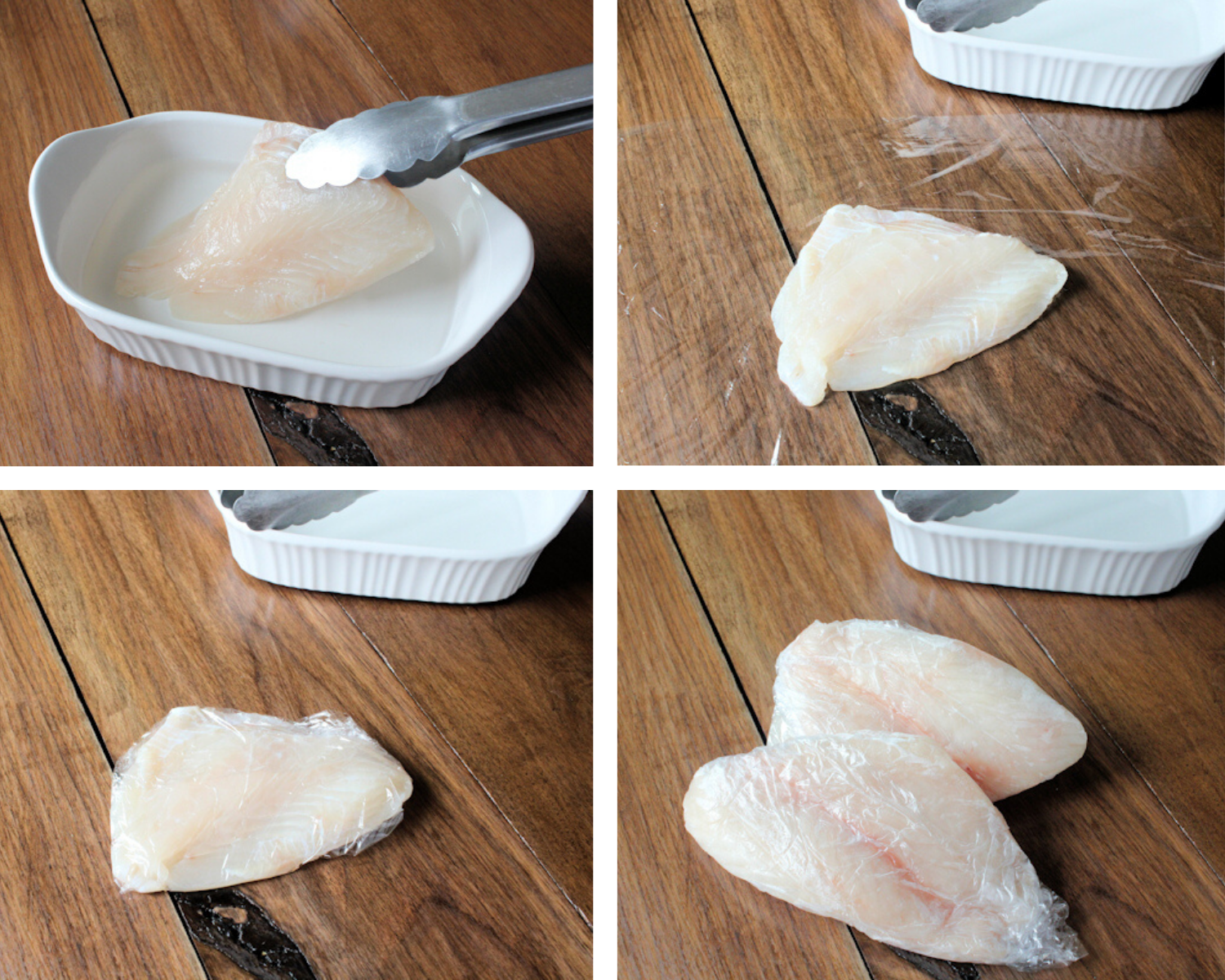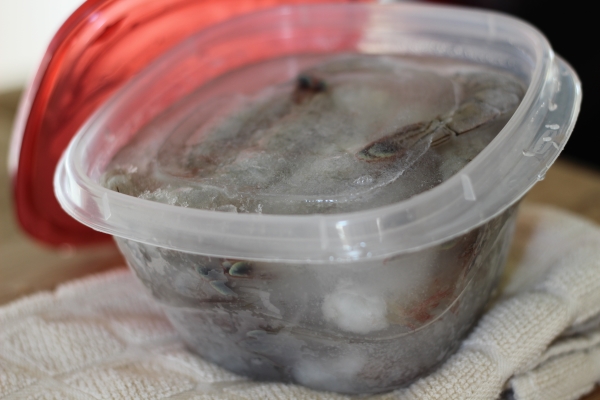Selecting and Storing Seafood
Follow this guide and learn what to look for when selecting fresh seafood, how much you should purchase, and how to properly freezing it at home so you maintain its quality.
What to look for in fresh seafood
Fish and shellfish are highly perishable and must be properly handled from catch to cook. Mishandling can result in loss of flavor and nutrients, and in some instances, render seafood unsafe to eat. Be sure that the seafood you buy is fresh. It’s a good idea to go to the market to buy fresh seafood, not just a particular species. If your recipe calls for flounder, but the snapper is fresher, buy the snapper. The following indicators will help you determine freshness and quality.
Fresh fish
- Eyes that are bright, clear, full and protruding. As a fish deteriorates, the eyes become cloudy, discolored and sunken.
- Gills that are bright red or pink. Avoid fish with gills that are dull pink, gray, brown or green.
- Flesh that is firm and elastic and springs back when pressed gently with the finger. It should not separate from the bone. As fish age, the flesh becomes soft and slimy and slips away from the bone. The flesh of fillets and steaks should be firm and elastic and have a fresh-cut appearance with no drying or browning around edges.
- Skin that is shiny, not faded and is free of excess slime. Characteristic colors and markings fade as a fresh fish gets older.
- Scales that adhere tightly. As fish deteriorate, the scales become dull and dry and begin to separate.
- An intestinal cavity (if gutted) that is pink with a bright red blood streak, not a dark or brown one.
- An odor that is ocean-fresh and mild. Fish fresh from the water do not have a “fishy” smell.
Fresh shrimp
- A mild odor and firm meat. Avoid shrimp with strong sour or “fishy” odors.
- Firm flesh.
- Translucent shells with grayish-green or tan coloration.
- Beware of raw shrimp that are bright pink or red, both signs of temperature abuse.
- Avoid shrimp with blackened edges or black spots on shell, a sign of age or poor handling.
Cooked shrimp
- Red shells and firm meat with a red tint and no disagreeable odor.
Live crabs and lobsters
- Show movement of the legs.
- The tail of a lobster should curl under the body and not hang down when the lobster is picked up.
Cooked crabs and lobsters
- Should have a bright color and no disagreeable odor.
Clams and oysters in the shell
- Should be alive. Shells should be tightly closed or should close tightly when tapped.
Shucked oysters
- Should be plump with a natural creamy color and clear or slightly opalescent liquid.
- They should have a mild odor and not contain more than 10 percent liquid.
Fresh scallops
Should have a sweet odor and be free of excess liquid. The meat of bay and calico scallops is typically creamy white but may be light tan or slightly pink. Sea scallop meat is typically creamy white but may be slightly orange or pink.
Frozen seafood
Should be solidly frozen with no discoloration or buildup of ice crystals (freezer burn) on the flesh, and no disagreeable odor. It should be wrapped with moisture-proof packaging that fits tightly and is undamaged. Seafood should be stored below the load line of the display case. It should contain clean, uniform pieces that are not frozen together. Breading or coating should be intact.
Cooked Crabmeat
Meat is grayish white and has a mild scent. Avoid meat with dry appearance and strong sour or “fishy” odors.”
How Much to Buy and Serve
Our fish recipes generally call for a number of fillets or steaks rather than weight. The reason for this is simple. I’ve watched countless people in the seafood market look at fish and ask for a certain number of pieces. They are deciding the size that will be served to each person.
If I’m going to cook fish for six people, I might buy six small fillets, three medium fillets or two large ones that can be cut into six serving-size pieces. In the 20-plus years that our newsletter reached several thousand people, we found that consumers preferred this. Most people can look at fillets and visualize how many will be needed to feed a certain number of people, but they can’t visualize the size of one-fourth or one-third of a pound.
Recipes usually state the number of servings. One hundred grams (about 3.5 ounces) is considered a serving. But in reality, we know that people usually eat more than this. In these recipes we have allowed one-fourth to one-third pound per person. Make them smaller or larger so that they meet your needs.
The following suggestions are based on approximately 3.5 ounces per serving:
- Whole or Round Fish – 3/4 pound
- Dressed Fish – 1/2 pound
- Fillets and Steaks – 1/3 pound
- Oysters and Clams, in the shell – 6
- Oysters and Clams, shucked – 1/6 pint
- Scallops – 1/4 pound
- Crab, cooked meat – 1/4 pound
- Crabs, live – 1 to 2 pounds
- Shrimp, headed – 1/2 pound
- Shrimp, cooked and peeled – 1/4 pound
To find retail markets that offer North Carolina seafood, check out these online resources:
How to Freeze Your Fresh NC Seafood
“I often use fresh North Carolina seafood immediately to test recipes for our Mariner’s Menu blog, but I also freeze some that same day to test more recipes later.”
Vanda Lewis, North Carolina Sea Grant
Fish
Fish have varying amounts of fat content depending on the species. The leanest fish, such as flounder, have a white- or light-colored flesh, while fattier fish, such as salmon or mackerel, usually have a darker hue.
The list below shows the average total fat content in a three-ounce serving of common finfish:
- High Fat (10 grams or greater)
- Herring, mackerel, salmon (Atlantic, coho, sockeye, chinook)
- Medium Fat (5 to 10 grams)
- Bluefish, catfish, swordfish
- Low Fat (2 to 5 grams)
- Halibut, mussels, oysters, ocean perch, salmon (chum, pink)
- Very Low Fat (less than 2 grams)
- Crab, clams, flounder, mahi mahi, scallops, shrimp, tuna
The fat in finfish tends to be polyunsaturated. When they react with oxygen, these fats will degrade and create off-odors and flavors. This process can happen even in frozen storage.
To maintain quality, finfish can be pretreated before freezing and frozen storage. We recommend a lemon-gelatin glaze that was developed by extension specialists with the NC State University Seafood Laboratory.

Just measure ¼ cup of bottled lemon juice into a pint container and fill the rest of the container with water. Dissolve one packet of unflavored gelatin in ½ cup of this mixture. Heat the remaining liquid to boiling, and then stir the dissolved gelatin mixture into the boiling liquid. Cool to room temperature.
Dip the fillet or steak in the liquid. Lift it out and allow to drain for a few seconds. Wrap the fish tightly in a heavy, protective plastic film, such as Saran Wrap or similar heavy film. Freeze quickly.
Fish frozen with a gelatin glaze will remain fresh longer than those with no glaze.
Shellfish
Clams and Oysters
Clams and oysters are best if frozen in their shells, which makes them easier to shuck with no loss of juice. Thoroughly wash the shells and place live shellfish in moisture-vapor resistant bags if you have plenty of freezer space to accommodate them.
If you’re tight on freezer space, however, you can shuck the shellfish. First, wash clams and oysters, discarding any shellfish that have died. These you can identify by gently tapping shells that are open slightly. If they do not close when tapped, they are likely dead. Shuck the shellfish into a strainer (save the liquid, known as liquor) and remove any pieces of shell.
If necessary, the clams and oysters can be rinsed to remove any sand. Place clams and oysters and their liquor in a plastic container or freezer bag, leaving ½-inch headspace, seal, and freeze. If there is not enough liquor to fill the container, use ice water.
Scallops
Scallops should be shucked and frozen in airtight containers.

Shrimp
Remove the head from whole shrimp, but leave the shell on. Place the shrimp in a freezer container and cover them with ice water.
Leave enough headspace for the water to expand when frozen. Use small or medium-size containers so the shrimp will freeze more quickly.
Avoid using freezer bags, because the shrimp tails can puncture them, causing leaks.
Blue crabs
Crabs should be be cleaned and cooked before freezing. Freeze the cores and claws and thaw them before picking the meat out. The quality of the crabmeat will be superior to that of frozen, picked meat that undergoes significant textural changes.
Cooked, picked crabmeat should be frozen in covered, airtight containers or in heavy-duty freezer bags. Massage the bag to force as much air out of it before placing the meat in a freezer. Another way to extend the shelf life of cooked crabmeat is to freeze it in preparations, such as crab cakes or casseroles. Blending cooked crabmeat with non-seafood ingredients tends to protect its tender texture by keeping it from becoming stringy.
